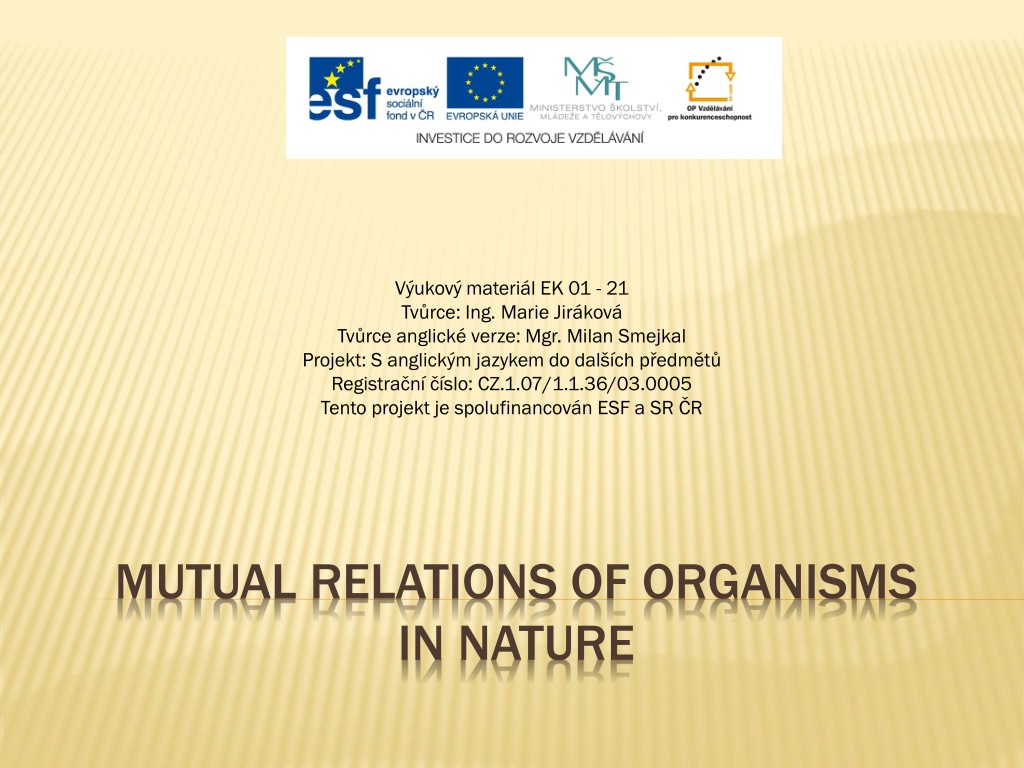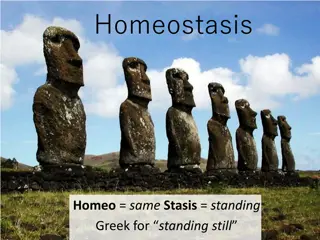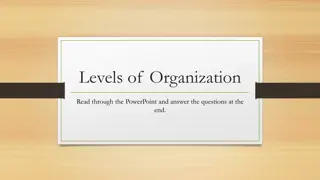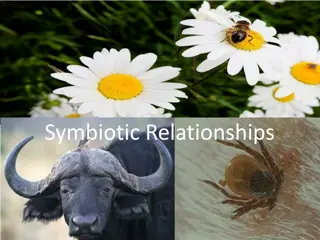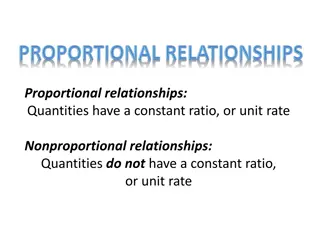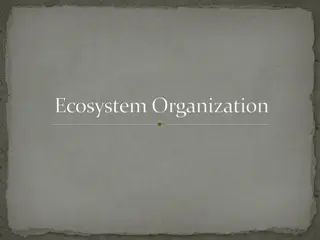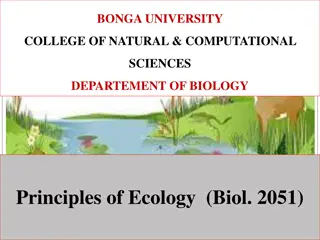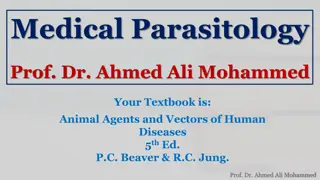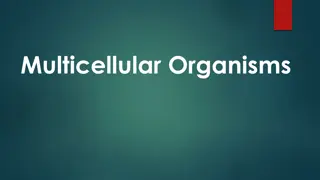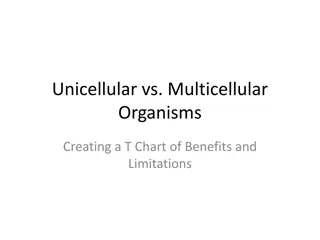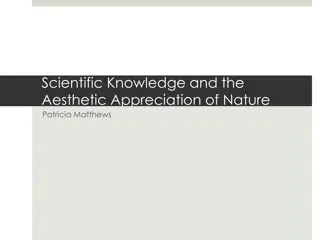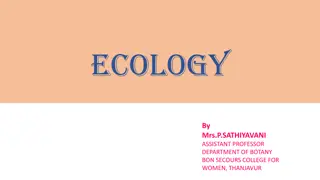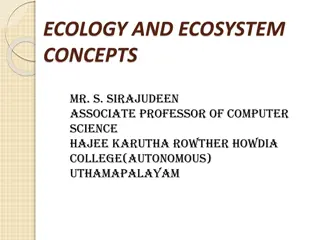Understanding Relationships Between Organisms in Nature
Explore the various relationships between organisms in nature, including intraspecific and interspecific interactions such as competition, predation, and parasitism. Learn how organisms compete for resources, hunt and protect themselves, as well as how parasites survive on host organisms. Delve into the complexities of coexistence and survival strategies among different species.
Download Presentation

Please find below an Image/Link to download the presentation.
The content on the website is provided AS IS for your information and personal use only. It may not be sold, licensed, or shared on other websites without obtaining consent from the author. Download presentation by click this link. If you encounter any issues during the download, it is possible that the publisher has removed the file from their server.
E N D
Presentation Transcript
Vukov materil EK 01 - 21 Tv rce: Ing. Marie Jir kov Tv rce anglick verze: Mgr. Milan Smejkal Projekt: S anglick m jazykem do dal ch p edm t Registra n slo: CZ.1.07/1.1.36/03.0005 Tento projekt je spolufinancov n ESF a SR R MUTUAL RELATIONS OF ORGANISMS IN NATURE
RELATIONSHIPS BETWEEN ORGANISMS Relations between individuals of one species - intraspecific Relations between individuals of different species - interspecific
RELATIONSHIPS BETWEEN ORGANISMS Competition Basic relationship Fight for the life conditions - water, space, light, food Between individuals of the same species and other species Among the individuals of one species - a fight for a territory - singers - competition for a selection of a partner - deer fights
RELATIONSHIPS BETWEEN ORGANISMS It is often true, that the one who comes the first is the winner - trees Finders keepers Plants can compete with each other by means of the roots, they also can use secretions wormwood, couch. This competition may lead to suppression of other species, or to establish a state of equilibration Species can exist one next to another => coexistence
RELATIONSHIPS BETWEEN ORGANISMS Predation: Among the species One body becomes a prey to the other Predator x pray Predator carnivore or herbivore Carnivore kills the prey, herbivore may not kill the organism => protective measures Plants - substances that advise the predator - onion - spiny outgrowths on the leaves and stems Animals - colour, smelling feces
RELATIONSHIPS BETWEEN ORGANISMS Parasitism: Organisms sponge on the bodies or the metabolic products of other organisms A special type of predation Parasite x host Real parasite (holoparasite) - heterotrophs Hemiparasite autotrophs only needs minerals from the host - mistletoe
RELATIONSHIPS BETWEEN ORGANISMS Ectoparasites (external) x endoparasites (internal) They feed on the body fluids, tissues, body parts ... Some organisms are parasites only at a certain stage of development For example. A flea: a larva lives freely and eat organic residues and the adults feed on blood Endoparasites Schistosoma Schistosoma haematobium blood blood flukes flukes =>cystitis Ectoparasites fleas, lice, ticks haematobium -
RELATIONSHIPS BETWEEN ORGANISMS A lot of parasites are pathogens Especially those feeding on body fluids In the Middle Ages there were fleas that carried the plague bacteria Today, for example ticks, which can transmit viruses that cause meningitis and bacteria that are causing Lyme disease
RELATIONSHIPS BETWEEN ORGANISMS Symbiosis: Fixed coexistence of two species Mutually beneficial co-existence - growing, food, reproduction Lichen - sponge + green algae Legume plants + bacteria can bind nitrogen
RELATIONSHIPS BETWEEN ORGANISMS Protocooperation Protocooperation : The relationship between pollinators and plants Comparatively free link They feed on plant juices + pollinating plants Sometimes only one species of an insect can pollinate certain plants
RELATIONSHIPS BETWEEN ORANISMS Cooperation: Cooperation of individuals A bird honeyguide feeds on honey and beeswax in most species and it can break even bee nests. Its screaming is heard by baboons or honey badgers and they can take honey from the nest. Or a bird honeyguide + natives
WORKSHEET - QUESTIONS What is a hemiparasite? Why are species in the wild competing? What is symbiosis? What are the types of parasites? What is the coexistence of a sponge with green algae in a lichen?
SOURCES BRANI , Martin. Z klady ekologie a ochrany ivotn ho prost ed : u ebnice pro st edn koly. 3., aktualiz. vyd. Praha: Informatorium, 2004, 203 s. ISBN 80-733-3024-5.
